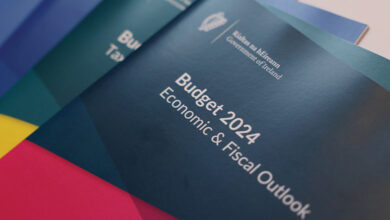Longer-term planning to keep transport infrastructure delivery on track

The All-Island Strategic Rail Review outlined the significant potential Ireland has for a world class dynamic transportation network that meets the needs of our urban and rural communities, writes Peter Carrigy of PwC.
Our record of capital delivery suggests we will struggle to deliver even a proportion of the rail review. Whilst you can argue the financial crisis halted such development for almost a decade, unfortunately development strategies and visions were also put on hold.
Ireland’s recent transport plans continue to be developed for 15-20-year periods. By looking at the longer term, we can help break the cycle of short-term political interference that often stalls infrastructure and transport development for years.
This is not a foreign concept; several jurisdictions are already exploring longer-term planning. In 2018, the New South Wales Government implemented the Greater Sydney Services and Infrastructure Plan. Noted by the Australian Prime Minister Anthony Albanese MP as intended to “take the politics out of planning”, the plan provides a 40-year blueprint for the evolution of the regions transport infrastructure aiming to improve the lives of its citizens. Already, benefits have been noted including the progression of a new metro, urban regeneration and increased public transport usage.
Similarly, Switzerland’s Transport of the Future 2060 plan aims to ensure future transportation projects align with the long-term evolution of the needs of Swiss people. Also in Finland, a country similar to Ireland in population size and density, policymakers are exploring the development of visionary transport plans to as far out as 2100.
In Ireland, we know we need to act. In 2022, the EPA outlined that transport accounts for nearly 20 per cent of Irish greenhouse gas emissions. Given the unequivocal need for our transport sector to evolve to reduce our climate impact now, a truly long-term cohesive transport infrastructure plan seems an essential aspect of our national development framework.
Such plans will only progress with cross-party collaboration, including sufficient public consultation. This will ensure it survives beyond the government of the day and facilitates development for the future. With the appropriate weight, such a plan would form the backbone of regional development plans far beyond one lifecycle.
Of course, a plan for 40 years requires iterations and political involvement in capital decision making will be ever present. However, a clear strategy and vision can keep our country on the right track. Importantly, frameworks such as the Public Spending Code, when utilised properly, can assist with delivery, implementation and realisation of the benefits envisioned by a long-term plan.
With such long-term visionary focus and clear communication, communities are also likely to become more accustomed to proposed investments and consequentially planning objections could be seen to reduce, facilitating more efficient delivery of our national development.

E: peter.a.carrigy@pwc.com
W: www.pwc.com





